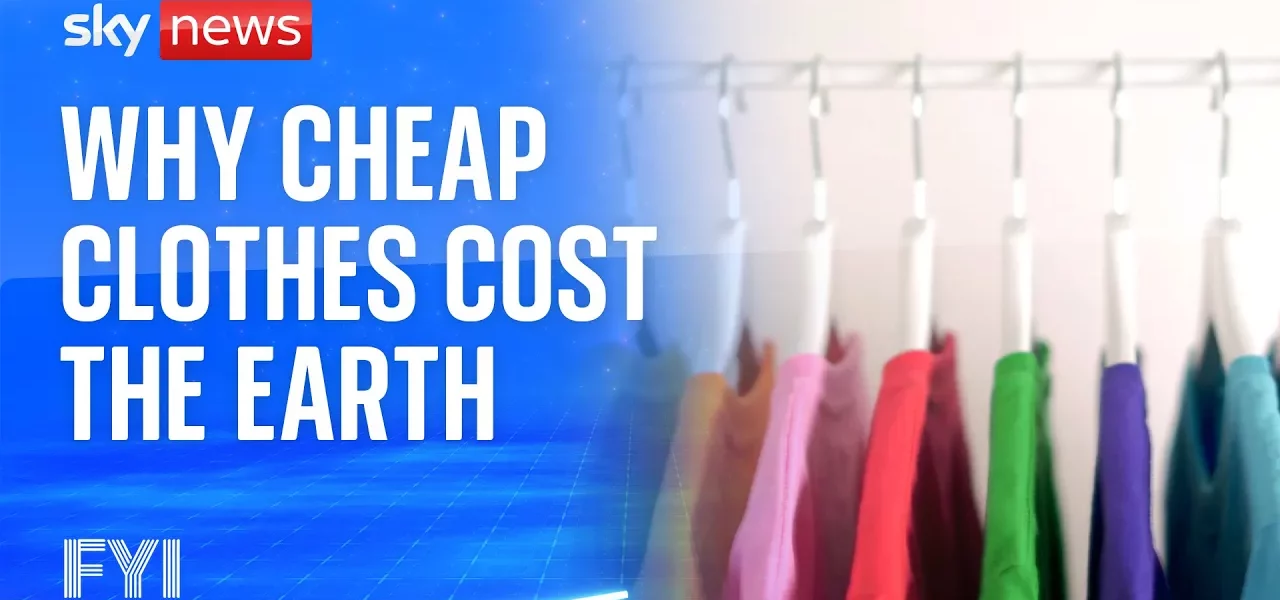The Impact of Fast Fashion on the Environment

In a world where fashion trends change at a rapid pace, understanding the implications of our clothing choices is crucial. Fast fashion has made stylish clothing more accessible than ever, but at what cost? In this article, we delve into the environmental and ethical issues associated with fast fashion, featuring insights from sustainable fashion expert Izzy Manuel.
Introduction to Fast Fashion
Fast fashion refers to the quick production of inexpensive clothing to meet the latest trends. While this model allows consumers to purchase fashionable items at low prices, it also contributes significantly to environmental degradation and social issues. In the UK alone, consumers spend around £60 billion annually on clothing, making it the largest market in Europe. However, the average individual owns approximately 76 items of clothing but discards around six every month, with less than 1% of discarded clothing recycled into new garments. This cycle of consumption and waste raises important questions about the sustainability of our fashion habits.
The Environmental Cost of Fast Fashion
Fast fashion’s environmental impact is profound, affecting water resources, pollution, and waste management. Here are some key points to consider:
Water Usage
Producing clothes, particularly denim, can be incredibly water-intensive. For instance:
- Creating a single pair of jeans can require up to 10,000 liters of water, which is equivalent to filling 125 bathtubs.
Pesticides and Chemicals
The fashion industry also relies heavily on chemicals for dyeing and finishing garments. These substances can:
- Contaminate local water sources when wastewater is improperly managed.
- Harm the health of workers and communities near manufacturing plants.
Ethical Considerations in Fast Fashion
While the allure of low prices is tempting, it’s essential to consider the ethical implications of our clothing purchases. Here are some insights:
Labor Conditions
The production of cheap clothing often comes at the expense of garment workers. Key statistics include:
- Only about 2% of garment workers globally receive a living wage.
- Many workers endure poor working conditions, long hours, and lack of job security.
Consumer Responsibility
As consumers, we must take responsibility for our choices. Questions to consider include:
- How are the clothes I buy made?
- Am I supporting brands that prioritize ethical production?
Embracing Sustainable Fashion
Transitioning away from fast fashion does not mean sacrificing style. Here are some tips for embracing sustainable fashion:
Buying Less
One effective way to reduce environmental impact is to buy fewer clothes. Benefits include:
- Saving money.
- Reducing waste and consumption.
Secondhand and Vintage Shopping
Opting for secondhand clothing can be fashionable and sustainable. Consider:
- Thrift stores and charity shops for unique finds.
- Clothing swaps with friends to refresh your wardrobe.
Learning to Repair
Learning basic sewing skills can extend the life of your clothing. Consider these simple alterations:
- Fixing small tears or holes.
- Altering hemlines for a better fit.
Conclusion
Fast fashion may offer low prices and trendy styles, but the hidden costs to our environment and garment workers are significant. By making conscious choices, such as buying less, choosing sustainable brands, and learning to repair our clothes, we can all contribute to a more sustainable future. Remember, looking good shouldn’t have to cost the Earth. For more tips on sustainable living, check out our other articles on ethical fashion and eco-friendly practices.
“`




